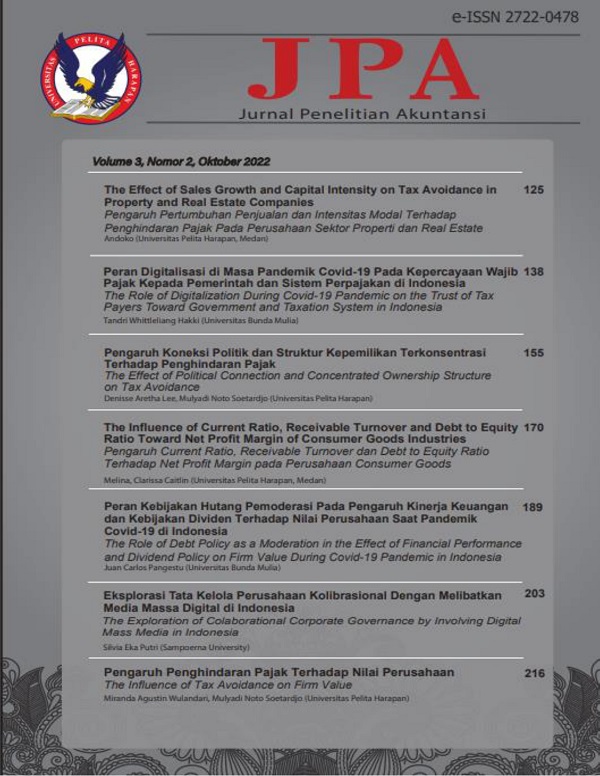The Influence of Current Ratio, Receivable Turnover and Debt to Equity Ratio toward Net Profit Margin of Consumer Goods Industries
Abstract
The most important goal for a business to achieve is profit maximization. A company with strong financial performance will draw investors to invest. In order to maintain a good financial performance, company must manage well its finance and operational cost.
The research is conducted to analyze the influence of Current Ratio, Receivable Turnover and Debt to Equity Ratio toward Net Profit Margin of Consumer Goods Companies listed on the Indonesia Stock Exchange for the period 2018-2021. The quantitative approach will be used in this study's research design. The research quantitative data is the secondary data acquired from the financial year reports of Consumer Goods Companies listed on the Indonesia Stock Exchange from year 2018 to 2021. With purposive sampling technique, 31 companies out of 78 companies in the population are chosen as the sample for this research. SPSS Version 25 is used to compute the multiple linear regression model of this research.
The research’s result shows that Current Ratio partially has insignificant influence towards Net Profit Margin. Receivable Turnover partially has insignificant influence towards Net Profit Margin. Debt to Equity Ratio partially has insignificant influence towards Net Profit Margin. Current Ratio, Receivable Turnover and Debt to Equity Ratio simultaneously have insignificant influence towards Net Profit Margin.
Downloads
Published
Issue
Section
License
Authors who publish with this journal agree to the following terms:
1) Authors retain copyright and grant the journal right of first publication with the work simultaneously licensed under a Creative Commons Attribution License (CC-BY-SA 4.0) that allows others to share the work with an acknowledgement of the work's authorship and initial publication in this journal.
2) Authors are able to enter into separate, additional contractual arrangements for the non-exclusive distribution of the journal's published version of the work (e.g., post it to an institutional repository or publish it in a book), with an acknowledgement of its initial publication in this journal.
3) Authors are permitted and encouraged to post their work online (e.g., in institutional repositories or on their website). The final published PDF should be used and bibliographic details that credit the publication in this journal should be included.


